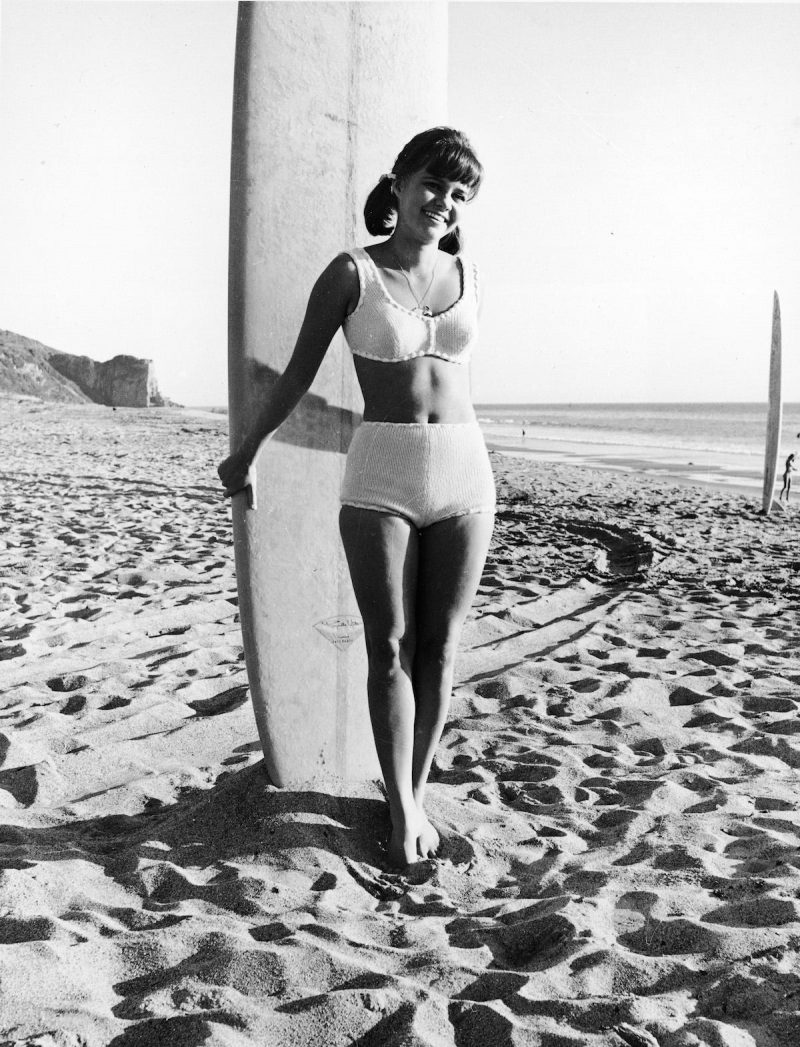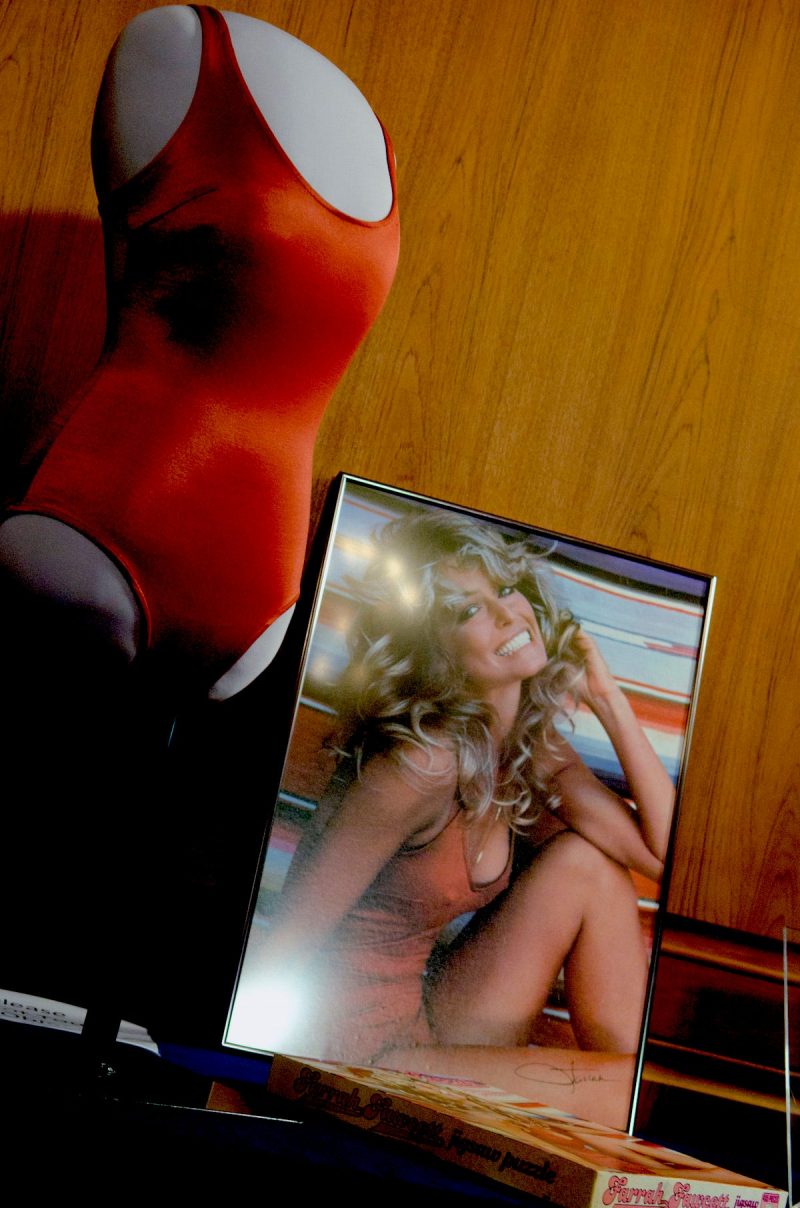- Popular styles of swimsuits have changed drastically throughout history.
- High-waisted bottoms and one-piece suits were popular in the ’40s, ’50s, and ’60s.
- Those same styles are seeing a resurgence today, though bikinis now reign supreme.
- Visit Insider’s homepage for more stories.
The modern bathing suit has a fascinating legacy. In the past, women typically wore swimming costumes that covered nearly every inch of their skin, but over the years swimsuits have trimmed down to the popular bikinis worn today.
Many current swimsuit trends like high-waisted bottoms, G-strings, and one-piece suits aren’t as original as you may think; they’re actually inspired by past styles that have been around since the 1950s.
We’ve compiled a list of 16 influential swimsuits that have made a lasting impact, from the first-ever bikini designed in 1946 to Halima Aden’s history-making burkini on the cover of Sports Illustrated’s swimsuit issue in 2019.
The first-ever bikini was designed in 1946.

In the summer of 1946, French designer Louis Reard debuted the first two-piece bathing suit, according to Slate.
The bikini was made of newsprint and featured a G-string strap, which was considered scandalous at the time. In fact, the suit was so controversial that fashion models wouldn't wear it. Instead, Reard enlisted Micheline Bernardini, a dancer, to wear it.
After Bernardini wore the strappy two-piece, bikinis became increasingly popular.
In 1948, Elizabeth Taylor posed for a portrait in a halter-top bathing suit.

Compared to Reard's bikini, Taylor's suit is conservative. However, this popular style of bathing suit was considered revealing at the time.
Wearing a polka-dot one-piece with built-in shorts, Taylor looks like a classic pinup girl.
Actress Brigitte Bardot embraced the bikini in the 1952 film, "The Girl in the Bikini."

In the French film "The Girl in the Bikini," Bardot plays a woman named Manina, who - as the film's title suggests - wears a bikini. Her low-waisted two-piece exposes a lot of skin and was a shocking fashion choice at the time.
While France and other European countries embraced the bikini in the mid-20th century, the style was slow to catch on in the US.
Anything Marilyn Monroe wore in the 1950s and 1960s became an instant classic.

Monroe is remembered for her lasting impact on American fashion and pop culture.
The icon wore a bikini while filming "Something's Gotta Give" in 1962. Though the film wound up unfinished - Monroe was fired from the movie a month into production - the image of her wearing a "nude" bikini with heels and jacket made an impression.
In 1962, Ursula Andress wore this stunning bikini in "Dr. No," the first James Bond film.

The actress made a lasting impression as the first Bond woman when she wore this white bikini. The swimsuit features strings knotted in a bow in the front, and has other practical elements, like a belt complete with a knife holder.
Other actresses in the Bond films have looked to Andress in this scene as inspiration - especially Halle Berry who famously replicated the look in "Die Another Day" in 2002.
In 1965, actress Sally Field posed in a high-waisted bikini.

Field posed in a high-waisted white bikini with a surfboard for a promotional photo shoot for the TV show "Gidget."
High-waisted bikinis that are similar to the one Field wore in the '60s are still popular today.
Farrah Fawcett became an icon after starring in "Charlie's Angels" in 1976.

In an effort to capitalize on her fame after "Charlie's Angels," Fawcett scheduled a promotional poster shoot.
The director of the shoot wanted Fawcett to wear a bikini, but she didn't own one. Instead, the star pulled this one-piece suit from her closet and styled her own hair and makeup. Her look made a mark in fashion history.
Carrie Fisher wore a stunning bikini in the 1983 film "Star Wars: Episode VI - Return of the Jedi."

Fisher played Princess Leia in the 1983 movie and wore this memorable gold chain bikini while she was held captive by Jabba the Hut.
It might not be the most practical beach look, but this bikini is remembered as one of the most iconic swimsuits in film history.
Pamela Anderson made an impression while wearing a red one-piece suit in "Baywatch" in 1995.

"Baywatch" certainly left a mark on pop culture and the recent reboot brought back everyone's favorite part of the '90s hit: the red bathing suits.
The high-cut one-piece Pamela Anderson famously wore is still a common look today. Sunny Co, a bathing suit company, replicated the look in a viral Instagram giveaway for the appropriately named Pamela Sunny Suit in red.
Rachel McAdams' bikini in "The Notebook" in 2004 was an iconic look.

McAdam's bathing suit in the film had a high-waisted skirt bottom, gingham-print top, and matching bow. The conservative look was perfect for the movie, which was set in the 1940s.
The look is similar to popular styles today. Vintage-inspired looks are back in style, and high-waisted everything continues to be trendy.
Beyoncé appeared in a colorful triangle bikini on the cover of Sports Illustrated's swimsuit issue in 2007.

Beyoncé's 2007 Sports Illustrated's cover shows her wearing an orange and gold two-piece with short-like bottoms accentuated with gold details. The mix-and-match colors continue to be a popular bikini design.
Tyra Banks shut down body-shamers in the most epic way in 2007 — while wearing a bathing suit.

You might consider Tyra Banks' strapless dark brown bathing suit bland, even with the bright stripes. But this bathing suit became legendary when tabloids body-shamed Banks for looking bloated on the beach while wearing it.
About a week after tabloids ran the photo, Banks posed in the suit on "The Tyra Banks Show" and delivered a passionate speech about women's bodies, insecurity, and body-shaming. She concluded by telling body-shamers to "kiss my fat a--" on national television. It was a major win for women.
In 2016, Ashley Graham made history as the first curvy model to grace the cover of Sports Illustrated's swimsuit issue.

Graham was a relatively new model before she appeared on the cover of Sports Illustrated's swimsuit issue in a bikini. Since the cover was published in 2016, she has become an outspoken advocate for body positivity in fashion.
Graham has used her fame as a platform to encourage body diversity and acceptance in the fashion industry. The model even has designed for the body-inclusive swimwear line, Swimsuits for All.
The burkini was created in 2004, but faced controversy in 2016.

Fashion designer Aheda Zanetti designed the burkini for Muslim women in 2004. She later wrote in The Guardian that she created the suits for religious women to remain modest while also partaking in outdoor activities.
The suits typically cover everything except a woman's face, hands, and feet. They also usually include extra fabric on the bodice, which can extend to the knee for extra coverage.
But in 2016, armed French police arrested a woman who wore a headscarf and tunic on the beach in Nice. Following the incident, several towns proceeded to implement a ban on burkinis completely, prompting backlash around the world.
Today, however, burkinis are more widely accepted. In Apri, model Halima Aden made history by wearing a burkini and hijab on the cover of the Sports Illustrated swimsuit edition.
In 2019, fashion retailer ASOS made strides in its swimsuit advertising.

In April, the brand released seemingly unedited images of models wearing swimsuits, which showcased their natural stomach rolls and stretch marks.
The photos were heavily applauded across social media, where people praised the brand for its "refreshing" take on swimwear advertisements.
That year also saw the merge of swimsuits and the logo-mania trend.

High-end fashion designers have been creating swimsuits for years - Chanel, for example, incorporated a number of them into one of its fashion shows in 1993.
But in 2019, the popularity of the logo-mania trend brought many of them back in style. Celebrities like Kim Kardashian also helped, especially after the reality TV star shared a photo of her wearing one of the vintage Chanel designs on Instagram.
- Read more:
- This bikini I purchased 4 years ago always makes me feel confident, and that's why I'll only buy my bathing suits from Swimsuits For All
- We tried swimsuits from a brand that uses its employees as fit models, and they fit us better than any other brand we've tried
- 2 friends with different body types are posing in the same swimsuits to prove that anyone can wear a bikini
- From the 1800s to now: Here's how swimsuits have changed over the years
